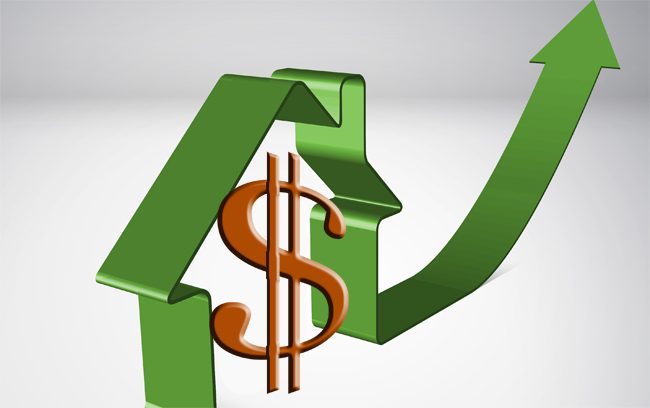The tangible nature of owning a home may be a contributing factor in your choice of investments. Control is another. The ability to physically improve your investment thereby increasing its value, and the freedom to buy, sell, trade, or repurpose without oversight or penalty, are among the best reasons for Real Estate as an investment. Current low interest rates can’t be ignored, nor can the recent trend toward declining home prices.
 Is Uncertainty in Other Markets Driving the Home Buyers?
Is Uncertainty in Other Markets Driving the Home Buyers?
Fueled by an era of uncertainty, consumers turn to home buying as a means of stability, a new study shows. The First American Financial Corporation recently released the May 2016 First American Real House Price Index (RHPI), which measures the price changes of single-family properties throughout the U.S. adjusted for the impact of income and interest rate changes on consumer homebuying power. For the month of May, the RHPI was unchanged as compared with April 2016 and increased 0.4 percent as compared with May 2015.
“Unadjusted house prices are expected to increase by 5.0 percent in April on a year-over-year basis,” says Mark Fleming, chief economist at First American. “Real house prices are 39.7 percent below their housing-boom peak in July 2006 and 19 percent below the level of prices in January 2000. Unadjusted, the national price level is 3.0 percent away from the housing-boom peak in 2007.”
Era of Uncertainty Continues to Drive Consumer Buying Power
“Demand for U.S. Treasury bonds remains at a record high as both domestic and foreign investors, still reeling from the outcome of the Brexit vote and grappling with greater global economic uncertainty, search for safety. This is compounded by negative yields on government bonds in Germany, Japan, Switzerland, and elsewhere, which make even the record low yields on U.S. treasuries attractive by comparison,” says Fleming. “The low yields on U.S. treasuries have kept mortgage rates marching downwards with the 30-year, fixed-rate mortgage remaining under 4.0 percent since July 2015. The housing market has benefitted with the low rates fueling increases in consumer house-buying power and keeping real house prices low by historic standards.
“The yield on the 10-year Treasury note hit record lows on the back of the ‘Brexit’ vote, uncertainty around the future of the European Union, and economic concerns in China,” says Fleming. “In the short term, the global economic turmoil is paradoxically having a positive impact on housing affordability and the health of the housing market in the form of almost historically low mortgage rates.”
May 2016 Real House Price State Highlights
- The five states with the highest year-over-year increase in the RHPI are: Wyoming (+10.6 percent), North Dakota (+10.3 percent), Nevada (+9.3 percent), Delaware (+5.4 percent) and Michigan (+4.6 percent).
- The five states with the highest year-over-year decrease in the RHPI are: New Jersey (-3.4 percent), Pennsylvania (-3.1 percent), Nebraska (-3.0 percent), Virginia (-2.8 percent) and Iowa (-2.7 percent).
May 2016 Real House Price Local Market Highlights
- Among the largest 50 Core Based Statistical Areas (CBSAs), the five markets with the highest year-over-year increase in the RHPI are: Jacksonville, Fla. (+11.9 percent), Tampa, Fla. (+8.7 percent), Seattle (+6.8 percent), Denver (+6.3 percent), and Sacramento, Calif. (+6.0 percent).
- Among the largest 50 CBSAs, the five markets with the highest year-over-year decrease in the RHPI are: Virginia Beach, Va. (-2.2 percent), Baltimore (-1.7 percent), Philadelphia (-1.7 percent), Richmond, Va. (-1.2 percent), and Oklahoma City (-1.1 percent).
Affordability in Many Major Markets Continues to Improve in May
“Real house prices declined on a month-over-month basis in 15 of the 43 metropolitan areas tracked by First American, as increases in consumer house-buying power were sufficient to more than offset unadjusted price appreciation. San Francisco, Washington, D.C, and Boston led the pack in terms of real house price declines and improved affordability, each experiencing month-over-month declines of roughly 1 percent,” says Fleming. “Counter to the conventional wisdom that housing is becoming less affordable in these markets, many consumers that were house hunting benefitted from an improvement in affordability in May.
“While a lack of inventory is still problematic, the improvements in affordability, caused by a combination of low mortgage rates and job growth are helping the market reach its potential for home sales. A rise in estimated median household incomes is also playing a large role in certain key markets that from a nominal standpoint seem expensive,” said Fleming. “For example, the increases in estimated median household incomes in both Dallas and San Francisco were enough to offset unadjusted price gains and bring meaningful affordability improvements in real terms to both markets.
“Rising household incomes and falling mortgage rates are currently boosting consumer house-buying power in many major metropolitan markets, offsetting any nominal gains in price levels,” says Fleming. “Improving affordability for consumers is a direct result of increased demand for long-term U.S. Treasury bonds due to overall uncertainty surrounding the future of global markets.”


